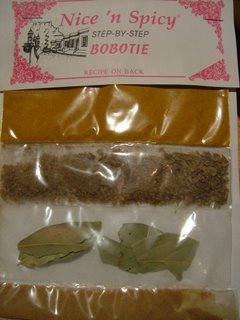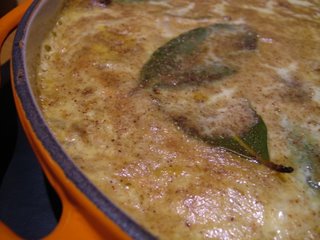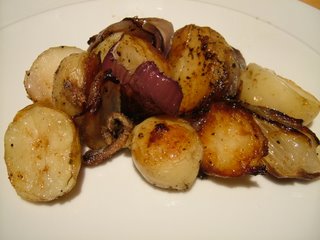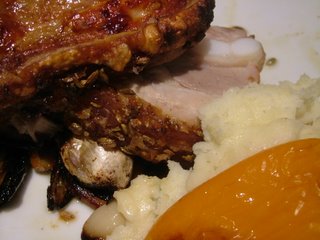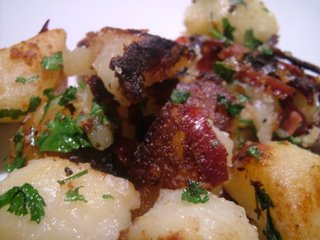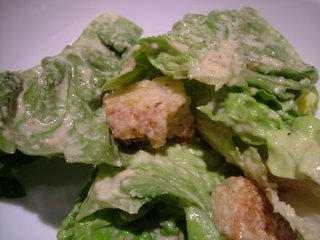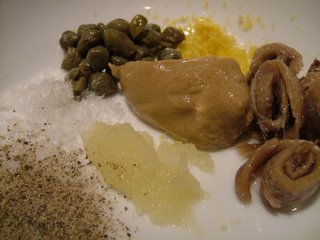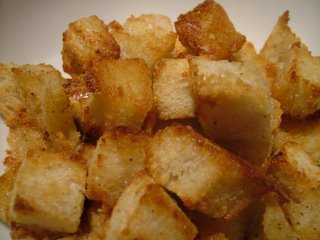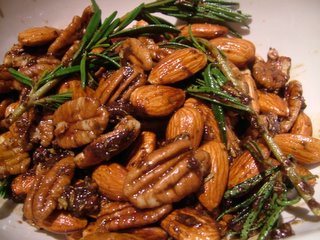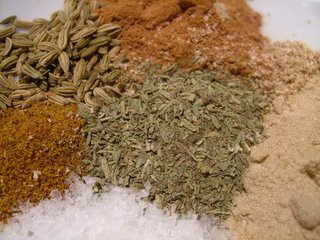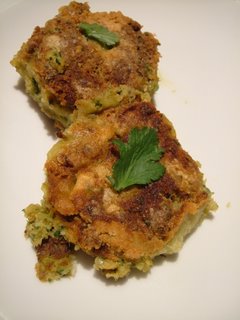 Wandering through Sainsbury’s this evening, I saw a shelf full of fresh garlic. I spent a whole five seconds or so wondering how they’d managed to get hold of fresh garlic in March, and then (I’m being slow today) thought to read the label. It’s from Egypt. Now, usually, I wouldn’t buy an overpriced, overpackaged single bulb that had flown such a long way to get to me . . . but as I continued my shopping, my mind kept going back to the garlic. After being slightly snappish with the lady at the fish counter about the pathetic lack of shellfish, I finally left self-control at the vegetable counter and bought a single bulb.
Wandering through Sainsbury’s this evening, I saw a shelf full of fresh garlic. I spent a whole five seconds or so wondering how they’d managed to get hold of fresh garlic in March, and then (I’m being slow today) thought to read the label. It’s from Egypt. Now, usually, I wouldn’t buy an overpriced, overpackaged single bulb that had flown such a long way to get to me . . . but as I continued my shopping, my mind kept going back to the garlic. After being slightly snappish with the lady at the fish counter about the pathetic lack of shellfish, I finally left self-control at the vegetable counter and bought a single bulb.
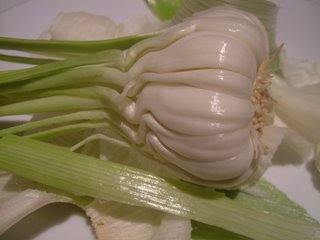 Here it is, the thick outer skin peeled off. You can see each individual clove in place; the green tendrils growing in a point from each become the white, straw-like threads you’ll recognise on the cloves of ordinary, cured garlic you have in your kitchen cupboard. When green, these tendrils are edible and very tasty; imagine a garlicky spring onion.
Here it is, the thick outer skin peeled off. You can see each individual clove in place; the green tendrils growing in a point from each become the white, straw-like threads you’ll recognise on the cloves of ordinary, cured garlic you have in your kitchen cupboard. When green, these tendrils are edible and very tasty; imagine a garlicky spring onion.
This year, I’m growing a lot of garlic for eating fresh in the garden; it’s sweeter, more fragrant and less harsh than the dry product. (I’m planning to have a go at curing my own this year if I manage to raise enough in the garden.) This fresh garlic roasts to a sweet, delectable paste, perfect spread on sourdough bread or stirred into a sauce. It is mild enough to be eaten raw. Sauteed gently, as in this recipe, it is juicy, plump and delicious.
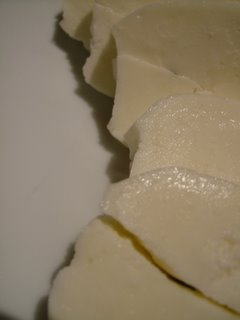 Halloumi is a salty, mild-tasting, ewes’-milk cheese from the Middle East. It has a very special quality; it holds its shape and does not melt in cooking, instead turning crisply golden outside and tender inside. The Lebanese call it the kebab cheese, and it’s excellent on a skewer over a barbecue.
Halloumi is a salty, mild-tasting, ewes’-milk cheese from the Middle East. It has a very special quality; it holds its shape and does not melt in cooking, instead turning crisply golden outside and tender inside. The Lebanese call it the kebab cheese, and it’s excellent on a skewer over a barbecue.
For a cooked herb, halloumi and green garlic salad to serve three as a main course, you’ll need:
1 bulb green (fresh) garlic, separated into cloves
6 shallots, finely diced
2 packs halloumi, sliced
1 handful each chives, coriander and tarragon
Juice of 1 lemon
1 large, sweet red chili
1 knob butter
 Melt the butter in a thick pan, and gently fry the whole cloves of garlic (green parts still attached) and the shallots for about ten minutes until golden. Slide the halloumi into the pan and fry on one side for five minutes until golden. Add the chili, cut into strips, turn the cheese over and wait until the second side is golden too.
Melt the butter in a thick pan, and gently fry the whole cloves of garlic (green parts still attached) and the shallots for about ten minutes until golden. Slide the halloumi into the pan and fry on one side for five minutes until golden. Add the chili, cut into strips, turn the cheese over and wait until the second side is golden too.
Layer half the cheese, shallots, garlic and chilis in a large mixing bowl, then sprinkle herbs on top. Arrange the rest of the halloumi and the pan juices over the herbs. Squeeze the juice of a lemon all over the salad and serve with crusty bread and some sliced tomatoes.

